Mayaguez Incident: The Post-Vietnam Rescue Operation That Left Over 40 Americans Dead
Just weeks after the Vietnam War was declared to be over, a new conflict erupted, threatening the peace many US and South Vietnamese soldiers had fought and died for. On May 12, 1975, the Khmer Rouge seized control of the US merchant vessel SS Mayaguez and held her crew hostage, signaling the start of an international incident. The following days were filled with chaos and confusion, before ultimately ending in the deaths of several American citizens and servicemen.
Rise of the Khmer Rouge
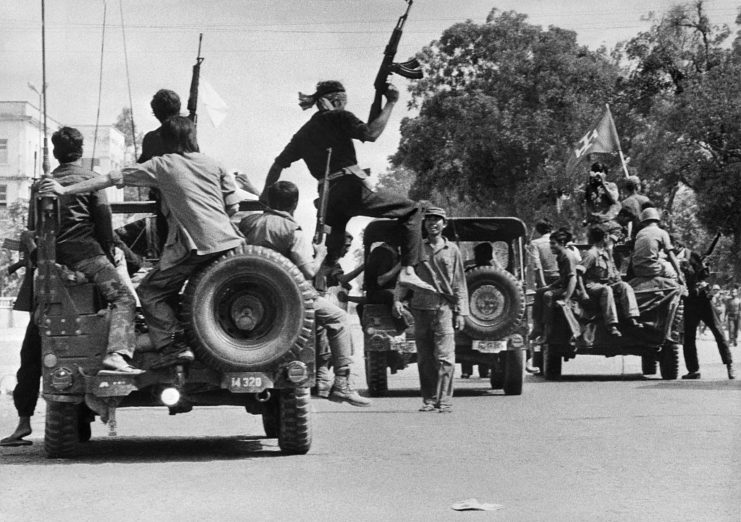
The origins of the Mayaguez Incident date back to 1939 with the start of the Second World War. In 1939, French colonists created a divide between Cambodia and French Cochinchina. This eventually became the unofficial maritime border between Cambodia and Vietnam.
In 1967, the Prime Minister of Cambodia struck an agreement with North Vietnam to keep their borders the same as those previously determined by the French, to avoid any further territory disputes. Around the same time, the Communist Party of Kampuchea (CPK) – also known as the Khmer Rouge – was gaining traction in the country.
The Khmer Rouge slowly grew throughout the late 1960s, supported by the North Vietnamese Amy (NVA), the Viet Cong, members of the Pathet Lao movement and the Chinese Communist Party (CCP). When the Cambodian Civil War broke out in 1967, the US launched a bombing campaign, codenamed Operation Freedom Deal, to stop the Khmer Rouge. Ultimately, the guerrillas captured Phnom Penh and overthrew the Cambodian government on April 17, 1975.
Rising tensions between Cambodia and Vietnam
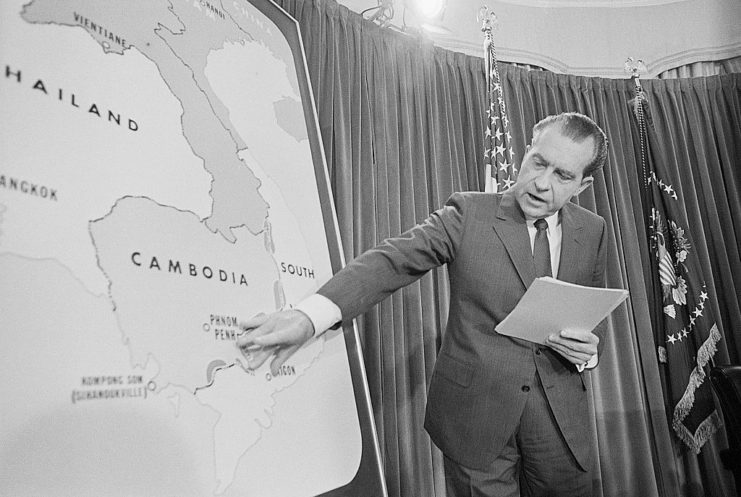
The Fall of Saigon on April 30, 1975 prompted the Khmer Rouge to demand that all Viet Cong and NVA forces leave Cambodia. The North Vietnamese refused, insisting the areas occupied were Vietnamese territory. Soon, a domino effect took place, with Cambodian and Vietnamese troops fighting to claim areas in South Vietnam and other territories.
Khmer Rouge naval vessels constantly patrolled areas around contested islands, to prevent Vietnamese attacks while also keeping an eye on passing merchant ships, which could be used by the CIA to supply them with weapons and resources. Soon, however, no vessel was safe. On May 2, the Kampuchean Navy seized seven Thai fishing boats. Two days after, sailors pursued a South Korean freighter, and, later, held the crew aboard a Panamanian ship hostage for 36 hours.
On May 12, the Khmer Rouge set their sights on Poulo Wai. While all of this hostile activity was going on, no warning was given to American merchant ships in the area. Cambodia claimed roughly 12 nautical miles of territory surrounding the island, but the US only recognized three as territorial waters, believing the rest was international. Their ignorance to the dangerous activity in the area, combined with the confusion over what was considered Cambodian territory, would prove to be a costly mistake.
The SS Mayaguez unknowingly crosses into Khmer Rouge territory
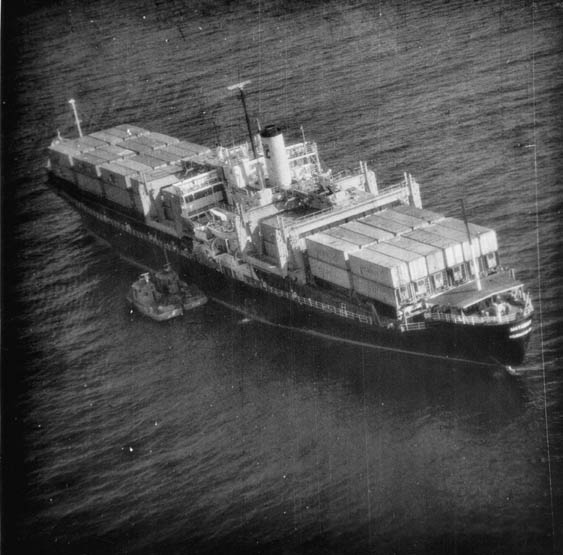
On the afternoon of May 12, 1975, the American container ship SS Mayaguez passed Poulo Wai on her way to Thailand. Sailing just two nautical miles off the coast of the island, with no flag flying, her crew unknowingly placed themselves and the ship in the crosshairs of the Khmer Rouge.
At 2:18 PM, a Kampuchean Navy boat approached Mayaguez. The vessel’s crew began firing machine guns across the container ship’s bow, prompting Capt. Charles Miller to order the engines slow to maneuvering speed, to avoid the onslaught of bullets. The Khmer Rouge subsequently stepped up their approach, firing a rocket-propelled grenade (RPG) across the bow of Mayaguez.
Miller stopped the ship and transmitted “SOS” over the communications system as seven guerrillas and their commander boarded, keeping him and the 39 crew members hostage and demanding they take them to a point east of Poulo Wai. An Australian vessel picked up Mayaguez’s Mayday signal.
The captured ship arrived off the coast of Poulo Wai at 4:00 PM, where another 20 Khmer Rouge guerrillas boarded the ship. Mayaguez was hauling 77 shipping containers of military cargo, as well as another 90 empty ones, all of which were insured for $5 million. Even with all the precious cargo onboard, the Khmer Rouge never inspected the contents, nor asked about them.
Meanwhile, Mayaguez’s SOS signals were picked up by a worker at the Delta Exploration Company in Jakarta, Indonesia. The US Embassy was alerted and, by 5:12 AM EST, the National Military Command Center in Washington, DC was aware of the crisis. The news reached President Gerald Ford during his morning briefing, and roughly seven hours after the Khmer Rouge boarded Mayaguez, a National Security Council meeting was convened to discuss next steps.
A heavy-handed rescue approach
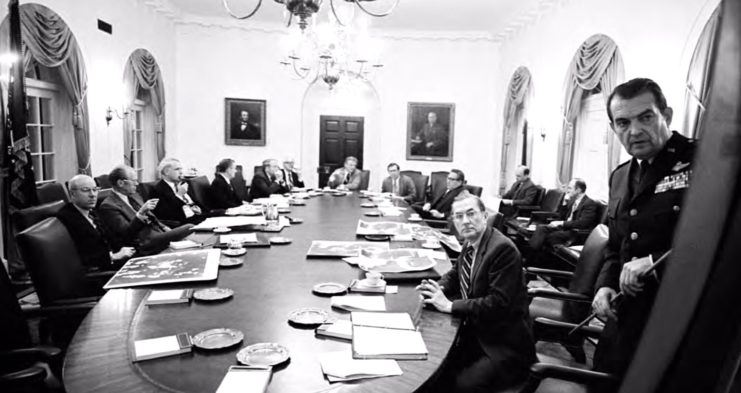
Gerald Ford sent three vessels to the area – the USS Harold E. Holt (FF-1074), Coral Sea (CV-43) and Henry B. Wilson (DDG-7) – to recapture the SS Mayaguez and her crew, while other military units were dispatched to Koh Tang, which was occupied by between 150 and 200 heavily-armed Khmer Rouge guerrillas.
When they reached the ship, they learned the crew wasn’t onboard. While they tried to unravel where they’d been taken, US forces launched attacks on several areas of mainland Cambodia. On May 13, after several General Dynamics F-111 Aardvarks had attacked the surrounding area, the Khmer Rouge ordered Charles Miller to anchor Mayaguez off the coast of Koh Tang. The crew were then loaded onto two fishing boats and brought closer to shore.
Eventually, an LTV A-7D Corsair II spotted 30-40 individuals aboard the small vessels. At 9:00 PM on May 14, 600 Marines conducted combat assaults to seize Koh Tang. Meanwhile, two helicopters created a diversionary assault on the island’s West Beach, while six others attacked the larger East Beach. The eastern force moved in to seize the compound where they believed the Mayaguez hostages were being held. They were met with heavy anti-aircraft fire and a large presence of Khmer patrol boats.
Unbeknownst to the Americans, Mayaguez‘s crew wasn’t even on Koh Tang.
The island was guarded by over 100 Khmer Rouge guerrillas armed with heavy machine guns and RPGs. As things escalated, the hostages arrived on the island of Koh Rong Sanloem, where Miller was interrogated by leaders who desperately wanted him to speak to the others onboard the container ship about calling off the onslaught of US bombers and attack aircraft. He agreed, and the crew was ordered to be taken back to Mayaguez the following morning.
The cost of freedom
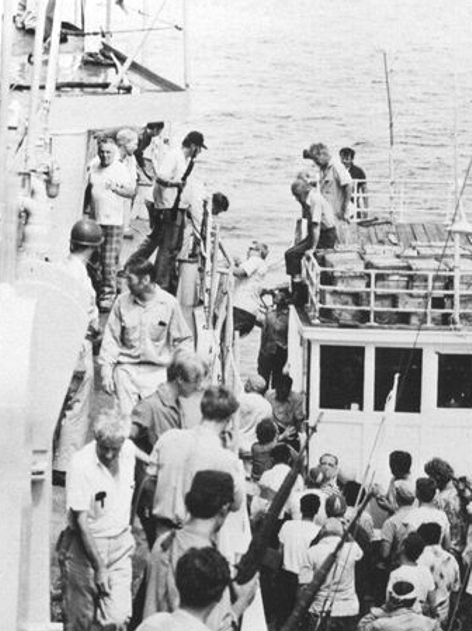
On May 15, 1975, the USS Henry B. Wilson tracked down the crew of the SS Mayaguez en route to their ship and took them to safety. The mission was a success, but not without a cost. Forty-one Americans died during the rescue operation, likely due to the heavy-handed approach to the situation, which some saw as unnecessary.
Many of the fallen servicemen were left where they died in Cambodia, prompting a lengthy investigation by US and Cambodian task forces in the 1990s. On three occasions, Cambodian authorities handed over the remains, and an underwater search and recovery team found the bodies of several men who’d died when their rescue boat was hit. Some Vietnamese informants also aided in the investigation, resulting in the positive identification of several other remains.
Captured US Marines were allegedly subjected to torture and death
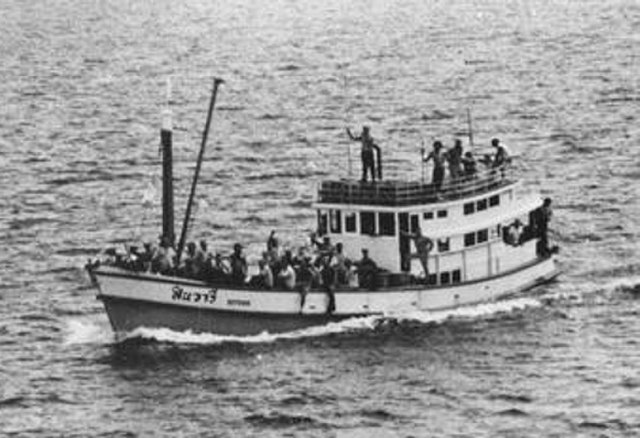
As years have passed since the operation, stories of captured Americans executed at the hands of the Khmer Rouge began to spread. One story alleged the killings took place a week after the attack on Koh Tang, when several men working with Communist leader Son Sen discovered someone had rummaged through their food stores.
Following bootprints left in the mud, they captured two US Marines left behind after the rescue. Son Sen ordered them delivered to mainland Cambodia, where they were left naked and shackled for a week, before being beaten to death with a B-40 grenade launcher. Their bodies were left on a nearby beach.
More from us: Roy Benavidez Survived ‘Six Hours of Hell’ to Save His Comrades
The horrors that occurred during the Mayaguez Incident could have been avoided, if not mitigated, with more oversight and a rational approach. Instead, the heavy-handed American response only created more Cambodian distrust and animosity toward the US military, likely contributing to their mistreatment of the captured Marines. It did, however, restore some faith in the effectiveness of the military following Vietnam.
The post Mayaguez Incident: The Post-Vietnam Rescue Operation That Left Over 40 Americans Dead appeared first on warhistoryonline.
Post a Comment
0 Comments